After two rather unspectacular wins over China and Spain in the FIFA Women’s World Cup, Germany awaited South Africa in their third group stage game. Germany were already qualified for the knockout phase of the tournament whereas their opponent South Africa were already eliminated due to their defeats against China and Spain. As a result, the match did not offer much suspense but from a tactical perspective, the game was another opportunity for Germany to improve their patterns of play for the upcoming matches.
Germany could dominate South Africa with their direct attacking approach which will be depicted further in this tactical analysis.
Lineups and Formations
South Africa lined up in a 4-1-4-1 formation. Captain Janine van Wyk guided the back four as a central defender next to Noko Matlou. The central midfield consisted of holding midfielder Refiloe Jane as well as Mamello Makhabane and Kholosa Biyana.
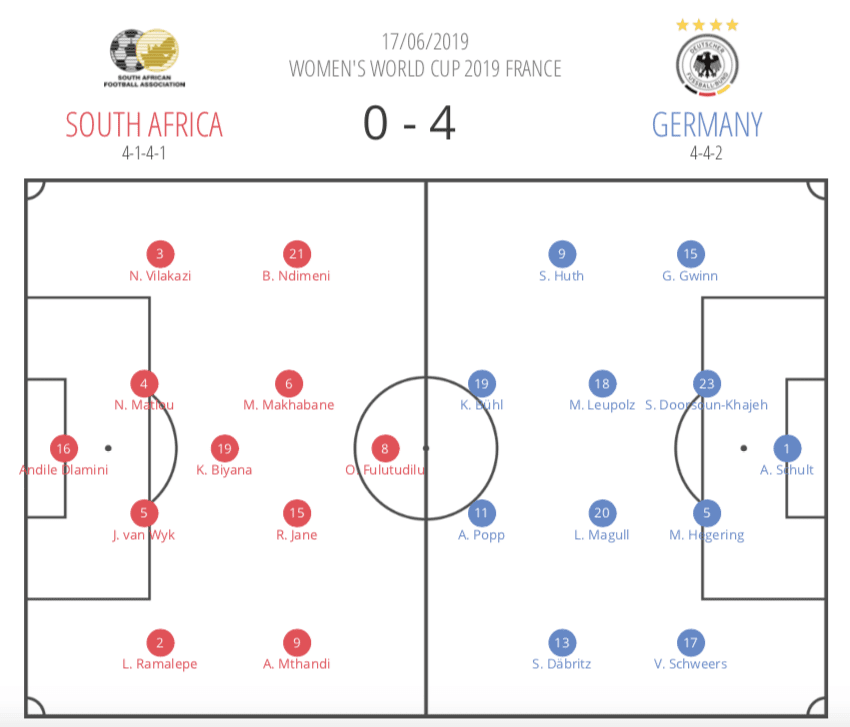
Germany on the other hand missed their playmaker Dzsenifer Marozsán due to an injury. Head-coach Martina Voss-Tecklenburg therefore undertook a change of formations and set up her squad in a 4-4-2 shape instead of their typical 4-2-3-1 system. Klara Buhl benefited from this tactical change and was lined up as the second attacker next to Alexandra Popp. Moreover, Voss-Tecklenburg lined up usual winger Giulia Gwinn on the position of the right-back for more attacking power.
Germany’s threatening counter-attacks
Germany aimed at disrupting the opposition build-up high up the pitch. Therefore, they used a zonal defending approach within their 4-4-2 formation.
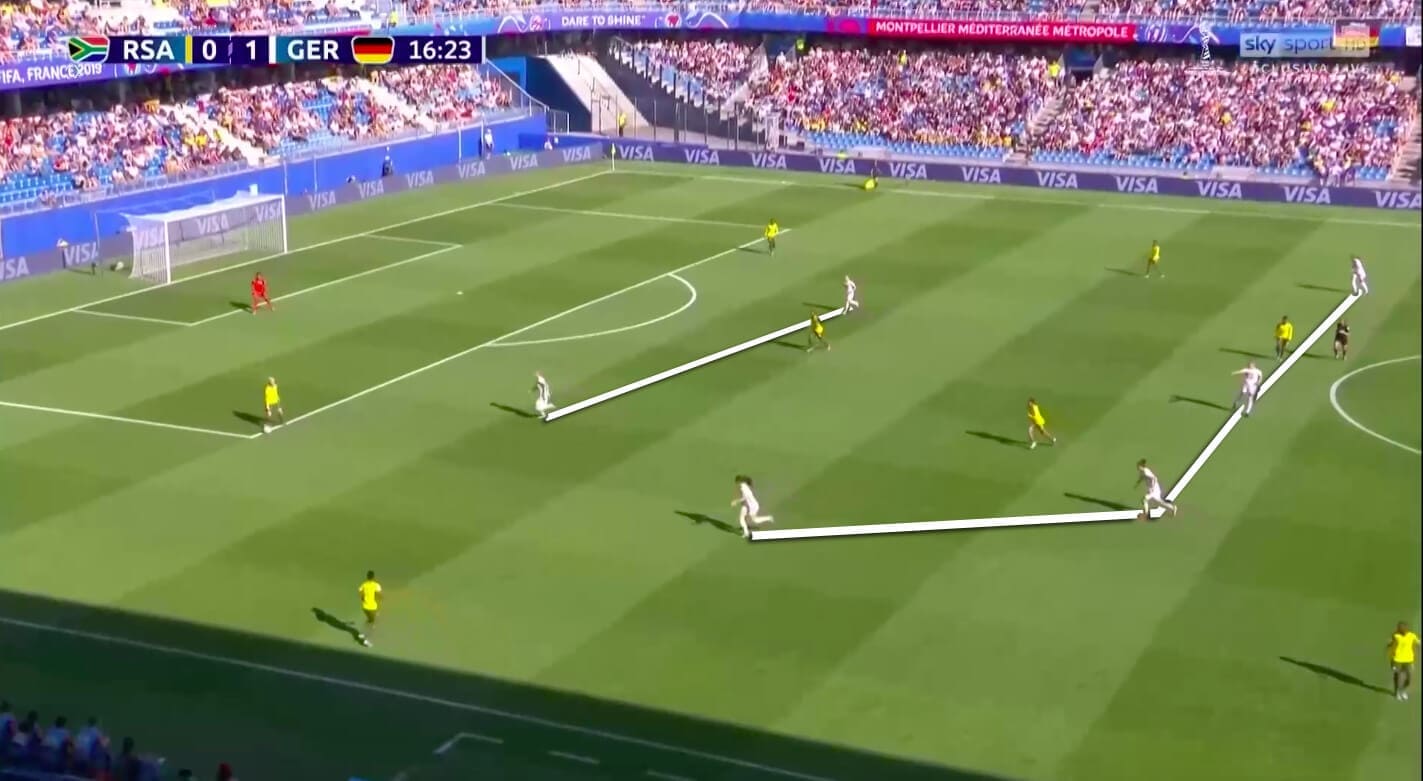
However, in ball near areas, the German players clearly marked opposition players in order to force South Africa to play long balls. As this strategy was sufficient to stop South Africa from playing out of the back, Germany therewith laid the platform to their domination in possession with 60%.
Moreover, Voss-Tecklenburg’s team also produced promising counter-attacking opportunities. In one of these counter-attacks, Germany got a corner-kick resulting in their leading goal of the game.
Especially in transition moments, South Africa’s back line offered some gaps. Germany often penalised this by playing through passes to break the last line of defence. That was possible due to missing pressure on the ball-carrier who often had a lot of space and because the central midfielders failed to close the gaps between the defenders.
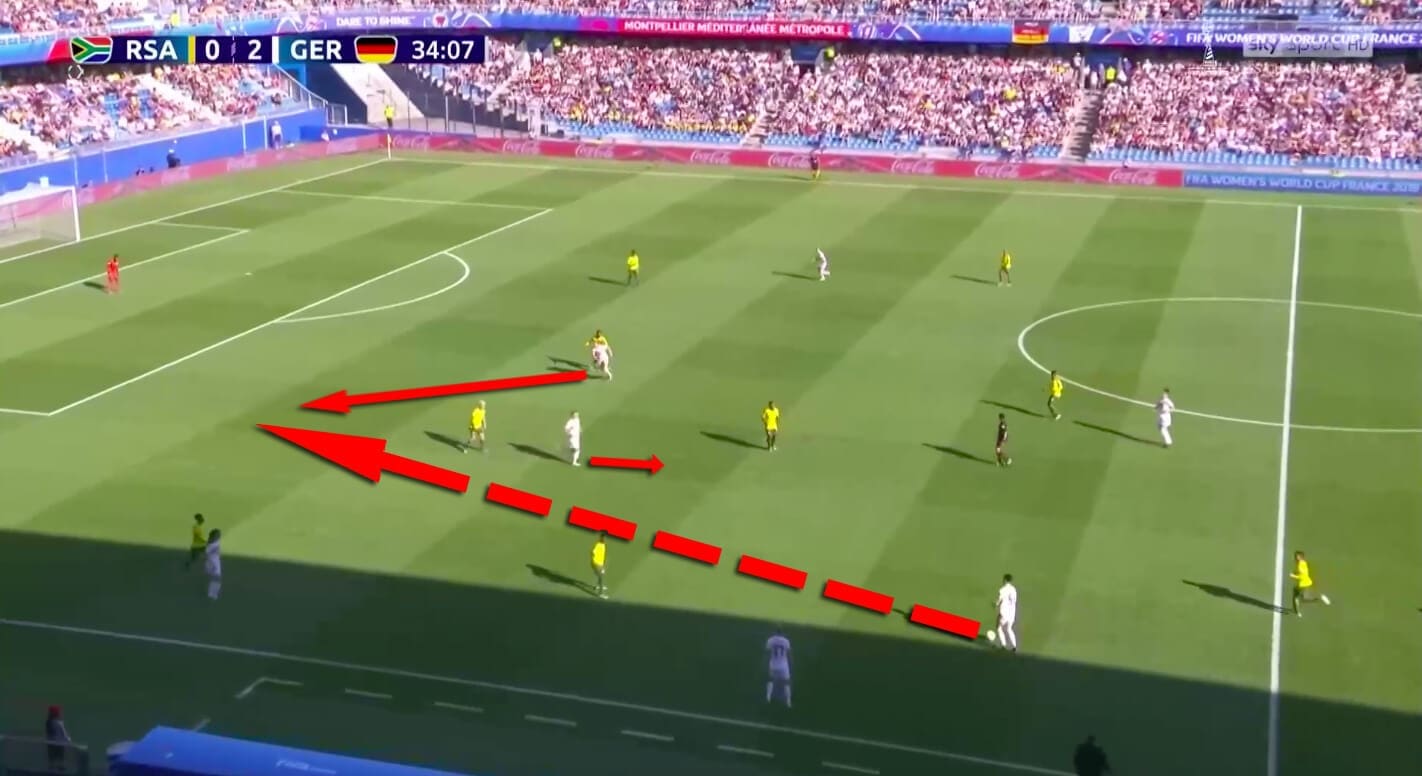
Another promising facet of the German attacks was the offensive contribution of the central midfield. Often either of the double pivot supported the attack with offensive runs while the other one covered the attack in the back.
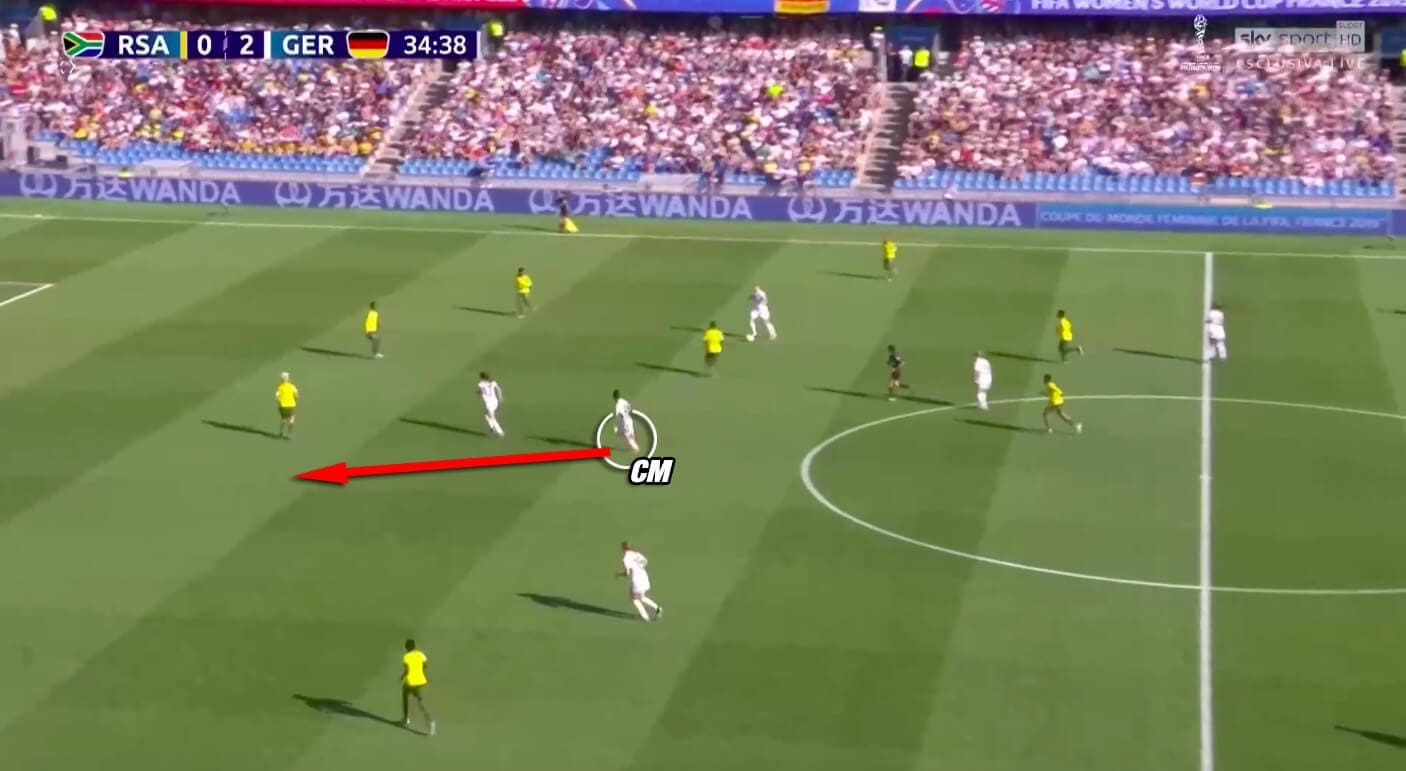
Regularly this posed huge problems for the South African defence as their advanced midfielders were positioned too far away from the back line and could not track back the German midfielders fast enough.
As a consequence, Germany could create promising chances in counter-attacks several times like on the picture above.
South Africa’s defensive issues
The South African defensive midfielder Refiloe Jane acted less space- or ball-oriented but always tried to mark one opposition player. But since Germany did not have one central offensive midfielder, the Jane often dropped back to mark Germany’s “false” winger Sara Däbritz. However, South Africa therewith offered plenty of space between the lines.
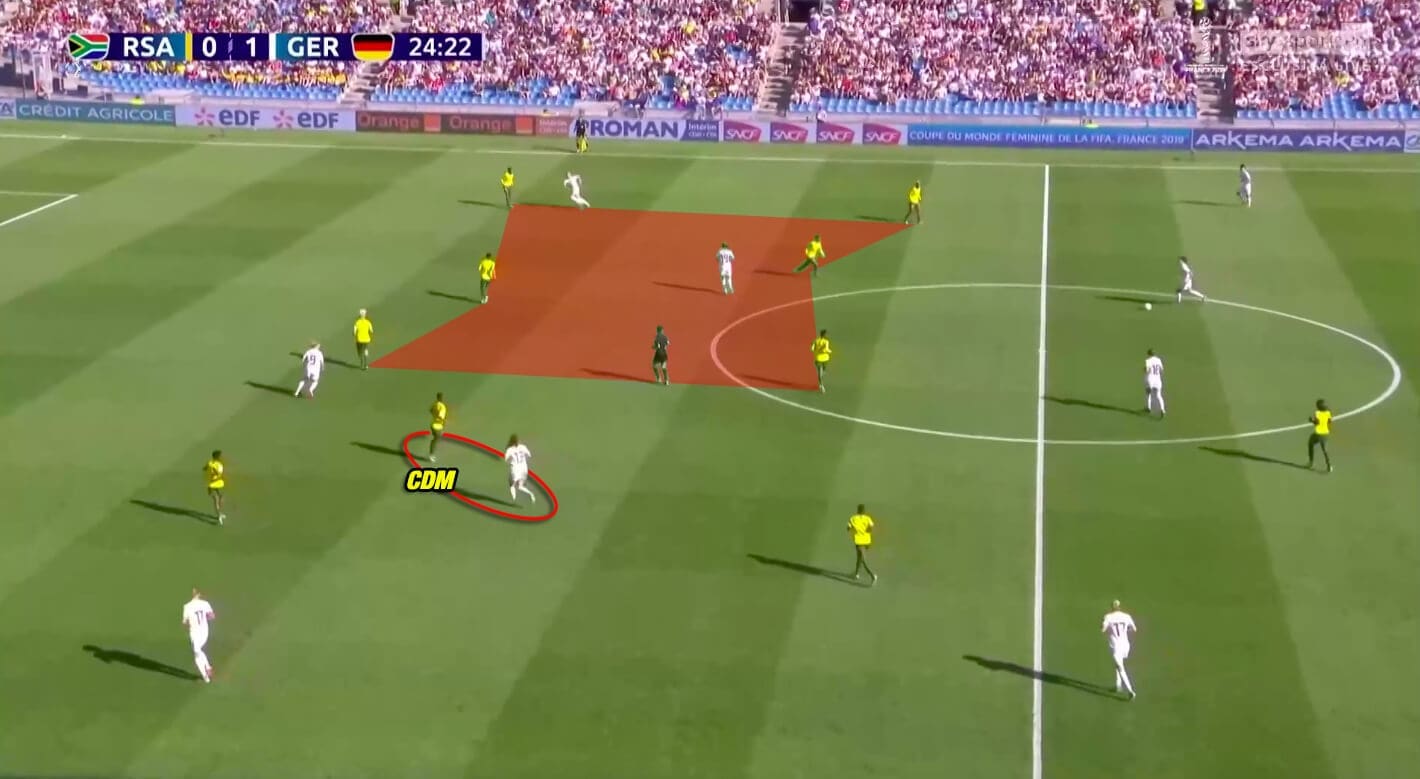
As a result, South Africa did not create a back four but played rather in a 4-4-1 with an additional player positioned somewhere within the back line.
This also posed a problem right before Germany scored their second goal. Since the South African defensive midfielder marked a German player in a ball far area, Germany could create a 3v2 situation in the ball near wing and use a simple counter movement to get behind South Africa’s midfield.
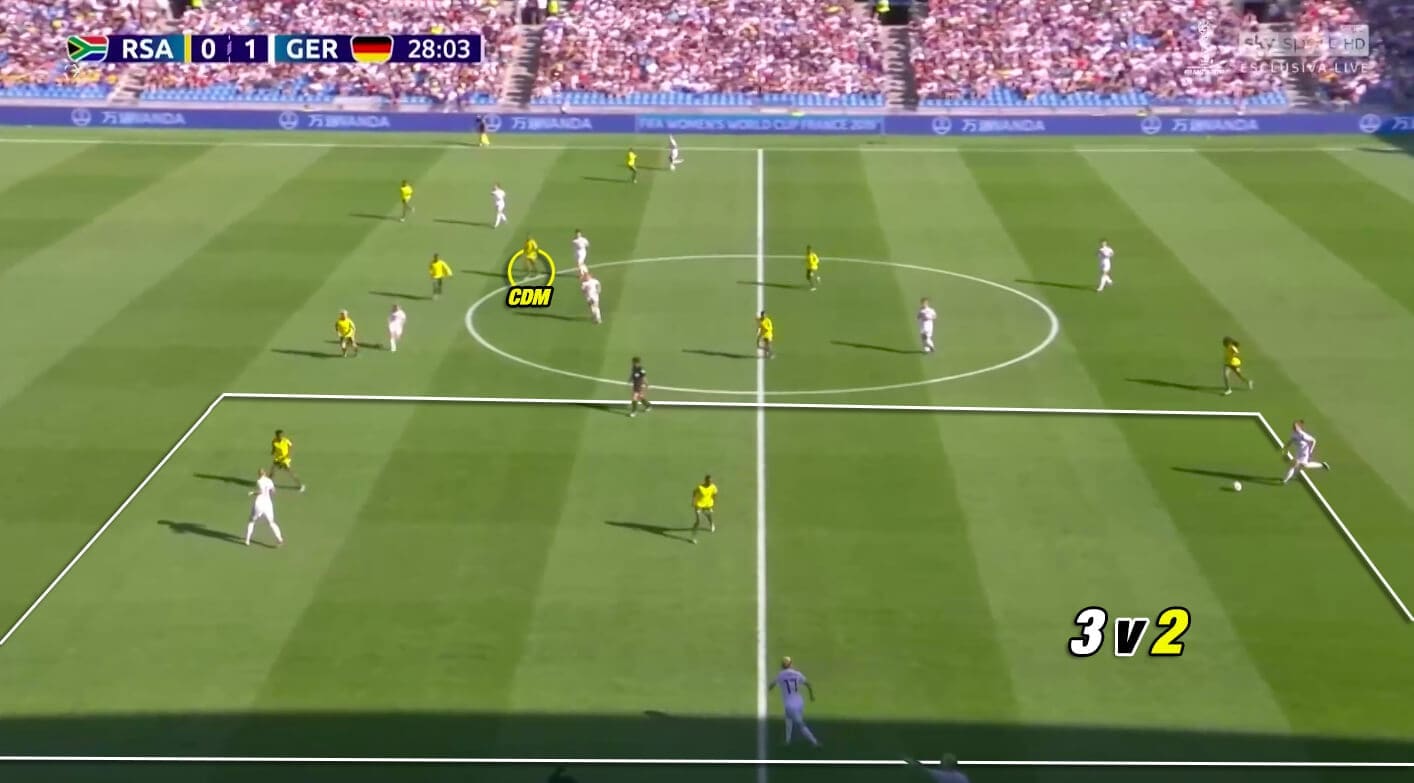
Although the goal was then caused by an individual mistake of goalkeeper Andile Dlamini, the structural issues of the South African midfield allowed Germany to get into this advanced area of the pitch.
Germany with overloads on the wings
Germany attempted to create goal scoring opportunities with overloads on the wings. Voss-Tecklenburg’s side often used rotational movements of their wide players to create space. With at least one further striker and central midfielder, Germany overloaded one side of the pitch and tried to break through or quickly switch play.
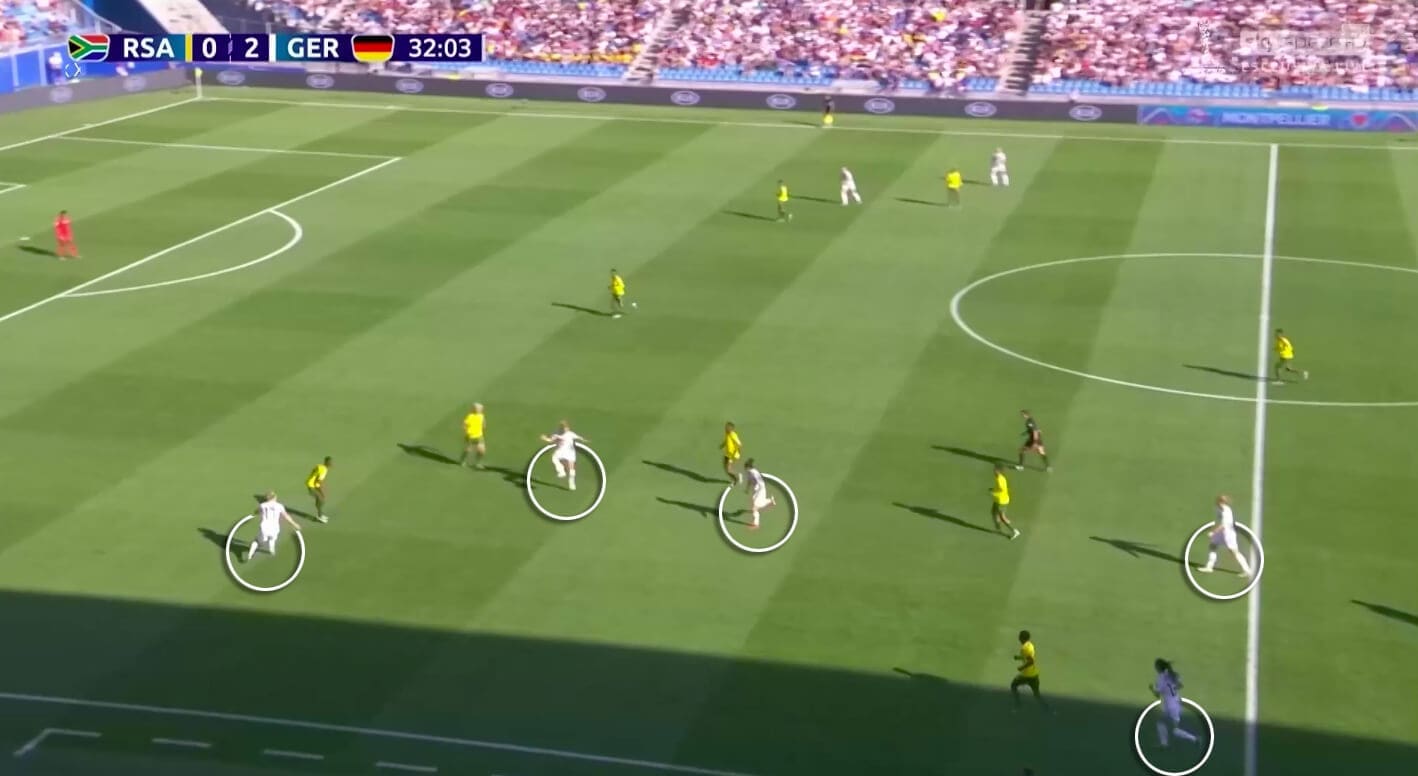
The wide forwards Sara Däbritz and Svenja Huth often tucked inside and occupied the space between the lines. That allowed the German full-backs to move high up the line. But South Africa allowed the German side to play into the space between the lines quite often. From these areas, the German wingers passed the ball on to the full-backs who used overlapping runs.
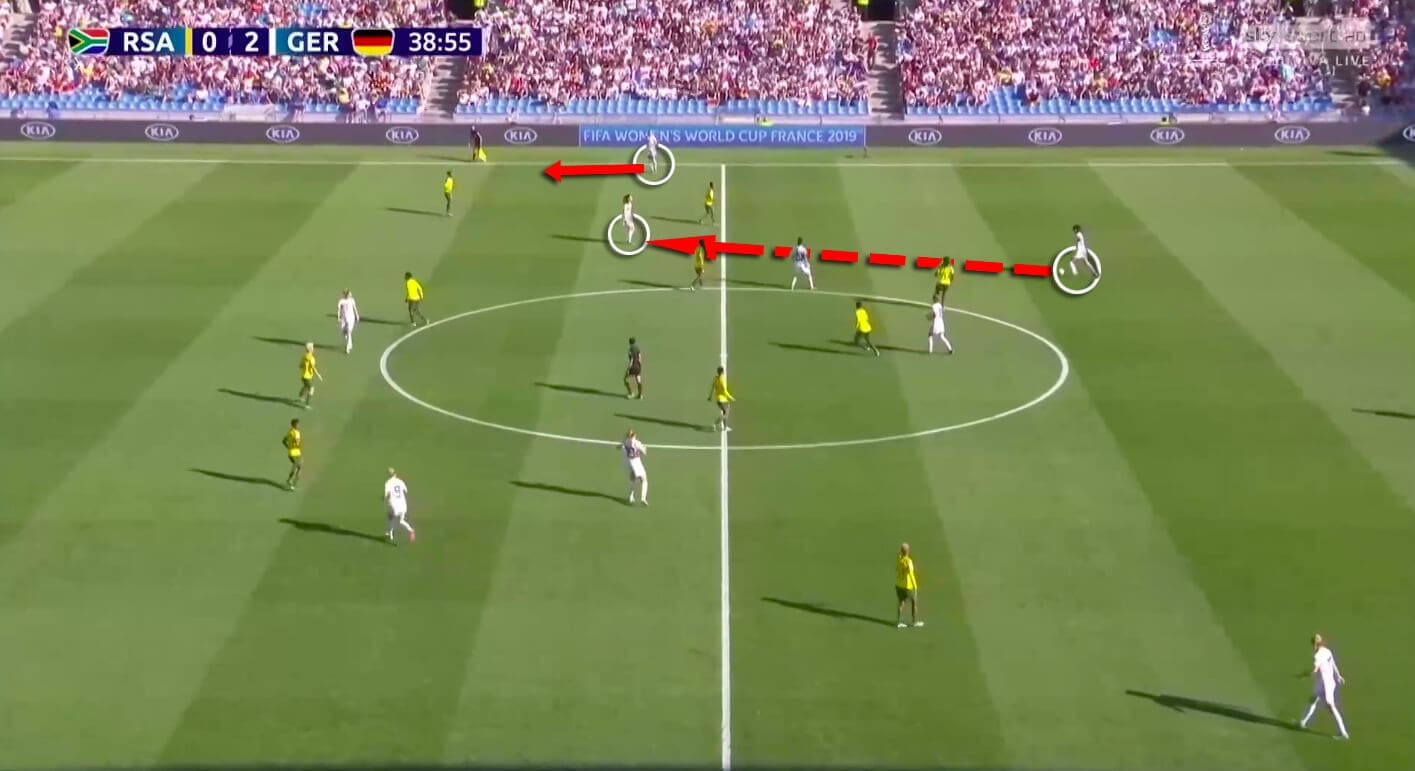
That way Germany could also introduce their third goal of the day.
South Africa expose German mistakes in the second half
The second half did not differ much from the first thirty-five minutes. However, South Africa created some chances and therewith unveiled some defensive problems of Germany’s defensive department in transition phases.
Building up with two central defenders and one holding midfielder sometimes created a gap between both centre-backs when the midfielder left the last line.
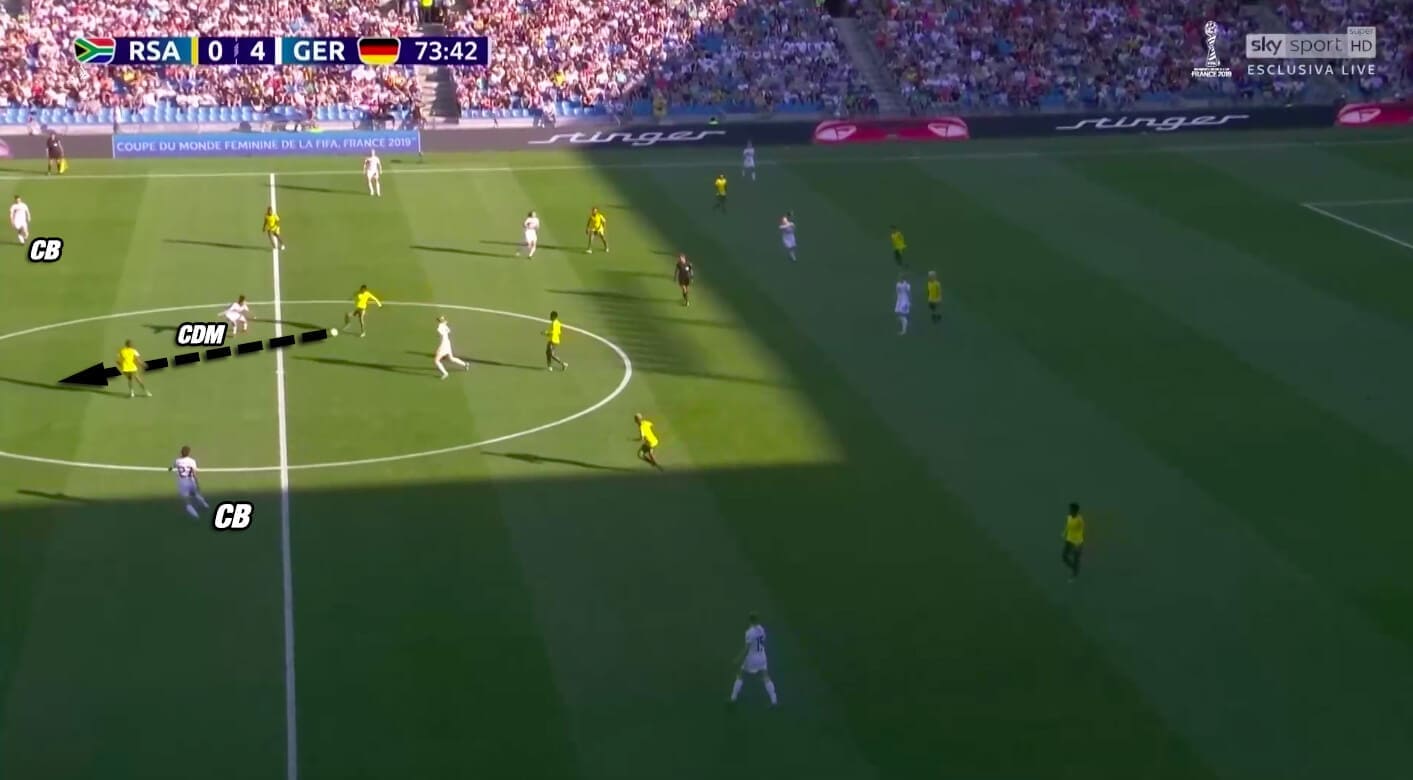
With only three defensive players, Germany will have to avoid simple errors in build-up. As South Africa were capable of winning the ball a few times, they could also create chances.
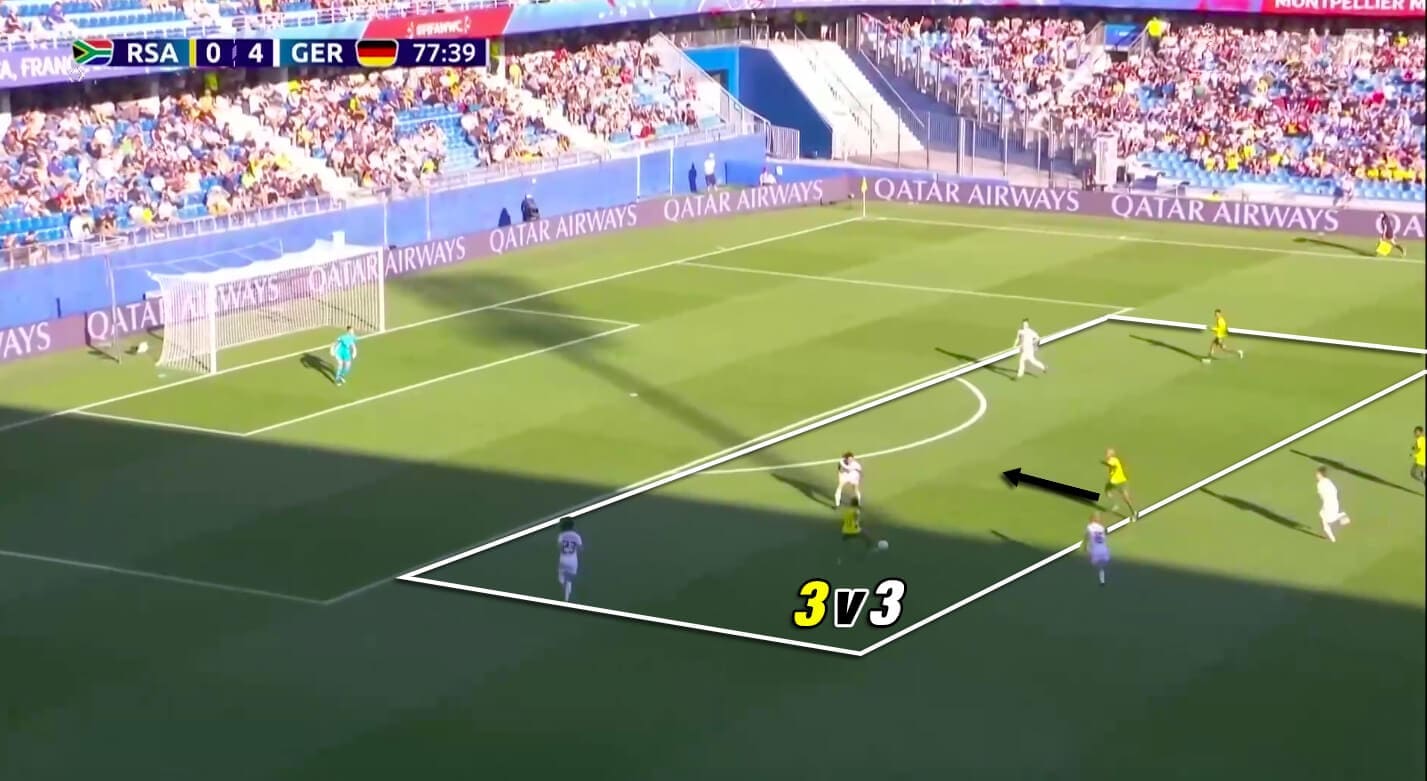
Nevertheless, these situations also resulted from simple mistakes when playing out. Against other opponents and with another score, Germany will probably play out with less risky passes. And since South Africa could not convert these opportunities into goals, the score stayed 4-0 after another set-piece goal from Germany in the early part of the second half.
Germany on the other hand still created plenty of good scoring opportunities. Only two goals from offside positions avoided an even higher result.
Conclusion
To sum up, Germany celebrated their first clear victory in their third game of the tournament over South Africa. With their wing play and the usage of overloads, Germany have shown their offensive qualities. Therewith, Germany still remain one of the favourites of the tournament.
South Africa, on the other hand, could not make use of their midfield superiority due to their structural issues when defending as explained in our tactical analysis. Furthermore, the lack of individual quality was also a vital factor why South Africa were incapable of earning any points in the Women World Cup group stage.
If you are following the FIFA Women’s World Cup 2019 then you will find our FREE tactical preview magazine the perfect compliment to the tournament. You can download it HERE – each nation is previewed and we also profile their key player and young player to watch. Enjoy!

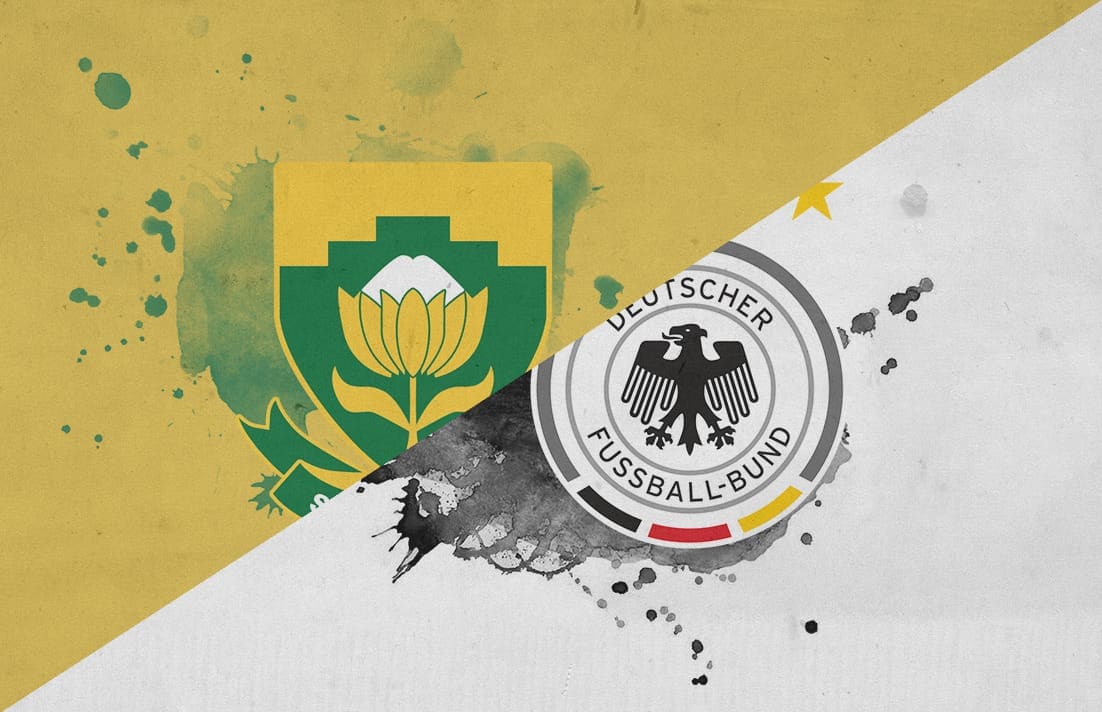



Comments